Well-applied mulch improves both the look and the health of your garden. Fortunately, it’s easy to apply mulch correctly once you understand the common pitfalls and expert tricks. Keep reading to learn ten expert mulching tips that will change your approach and revolutionize your garden.
1. Tidy up and prep garden beds
The very first tip for successful garden mulching is to properly prepare the garden soil before mulching. This includes removing dead or unwanted plants, raking up and composting excessive leaf debris, pulling out weeds, and checking the condition of any mulch that’s already there.
You could, of course, just mulch over weeds, but there are excellent reasons for pulling weeds before mulching. Established weeds will likely have the strength to push right through your new mulch layer. Existing weeds may also have weed seeds that can lay dormant in the mulch until they decide to germinate and wreak havoc on your garden beds.
Mulching Tip: Since one of the main benefits of garden mulch is to suppress weeds, it makes sense to start off on the right foot. The best way to stop weeds from growing through mulch is to remove all existing weeds before mulching. Follow weed-clearing up with a generous thickness of quality organic mulch and pull any baby weeds up and out as soon as they pop up.
“Thick mulches on the surface of planted areas retain moisture within the soil beneath while also reducing the chances of weed infestation. The soil should be moist, warm and as weed-free as possible before the mulch is applied to the surface.”
Royal Horticultural Society Small Garden Handbook: Making the Most of Your Outdoor Space, by Andrew Wilson
What if there is already some mulch on the garden bed? Do you have to remove old mulch before applying new mulch? Most organic mulches can be left in place and simply mulched over once the area is otherwise tidied up. Remove any contaminated mulch or mulch that’s otherwise unwanted. Any synthetic materials like rubber mulch or plastic sheeting should also be removed at this point.
Mulching Tip: This is the time to install drip irrigation if that’s a feature you’d like to have.
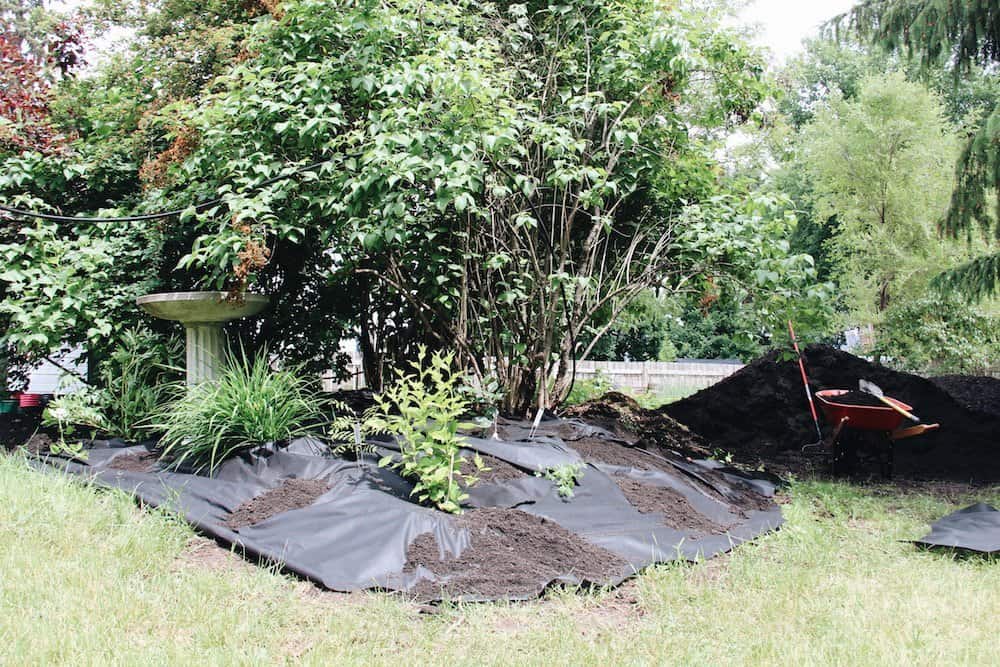
2. Rethink weed barrier/landscape fabric
What do you put down under mulch? In most situations, there is no need to place anything under the mulch. Mulches can generally be applied directly on top of bare garden soil.
Some people think that a layer of synthetic material can prevent weeds long-term, so landscape fabric is sometimes laid as a weed barrier. But do you need landscape fabric under mulch? No – generally, landscape fabric is more trouble than it’s worth in the long run. Landscape fabric is an added up-front cost that only deters weeds in the short term. It can be an effective way to quickly clean up a garden bed area, but the effect will not last more than a season or two.
Mulch works great enough on its own and doesn’t need a plastic tarp or black landscape fabric beneath it. Weeds can quite easily enmesh themselves into landscape fabric. Established weeds (even small ones) will push through the landscape fabric by the end of the season and for years after installation. Nearby weeds will grow and release their seeds, resulting in new weed seeds landing on and germinating in the mulch. After a couple of years, the weed-barrier action of the landscape fabric will be greatly diminished. At this point, the landscape fabric only makes pulling weeds and digging in new plants more difficult.
What about plastic sheeting? Should I put plastic down under mulch? No – while plastic sheeting can be an effective weed barrier, it is generally best used on its own rather than under organic mulch. While thick plastic may provide a better weed barrier than the landscape fabric, there is still the problem of new weed seeds blowing into the overlying mulch.
Impermeable plastic sheeting has the added factor of interfering with natural water drainage patterns (so, soggy ponding mulch during rainy periods). Both plastic sheeting and other synthetic layers can contribute to water runoff and prevent the garden soil from directly benefiting from the mulch (good organic mulch feeds the soil). Plus, you’ll have a bigger problem than weeds if your landscape plants have restricted water access to their deeper roots.
3. Choose mulching material with the perfect texture & color
There is a wide range of mulch colors and textures available. Think of mulch as an accent to your garden when selecting a mulch, and don’t forget to consider the surrounding areas.
For instance, consider your home’s color and its accents. If you have a fence, what color is it? Taking in the entirety of your garden and the structures that are near it can help you pick the perfect mulch color.
“”Mulch” is a term used for any material that is laid on the soil for some or all of the following purposes: retaining moisture, suppressing weeds, adding organic matter, and protecting against erosion or frost. Mulch can be hay, straw, grass clippings, compost, bark, sawdust, wood chips, or even plastic.”
All The Dirt: Reflections on Organic Farming, by Rachel Fisher, Heather Stretch, and Robin Tunnicliffe
So what color mulch is best? Dark brown mulch is most common, as it is low-maintenance and camouflages plant debris. My favorite dark mulch for garden beds is homemade compost. It has a dark, homogenous appearance (they call it “black gold”) and lasts throughout the season. It also doesn’t contain large chunks (some mulches include “chunks” like wood chips that tend to float to the top after a few weeks).
Grey is also a great color for mulch, especially in areas with foot traffic. My favorite mulch for lightly traveled footpaths and outdoor areas is pea gravel. It has a classic appearance, drains well, is readily available, and is relatively low-maintenance.
4. Decide exactly where to mulch with a “mulching footprint”
Mulch doesn’t have to be used only in the veggie garden or under big trees where grass won’t grow. Mulch can be used anywhere with bare soil that is lightly trafficked and otherwise available for mulching. With this in mind, you should feel free to add mulch near your garden and around your house too. For instance, if there’s a thinning area of grass in your lawn due to regular traffic, consider bulking up the area with a mulched pathway.
You can also add mulch around signposts, mailboxes, utility poles, fences, paved areas, and any other available place that you think will look good.
Mulching Tip: Lay down string, hammer in stakes, or place rock markers around the perimeter footprint of where the mulch will go. Look at it and adjust the perimeter until you’ve got it just right. It’s much easier to pick the right perimeter now (don’t ask me how I know…).
“Many kinds of materials can be used for mulching. The mulch materials you choose for your vegetable garden can be practical but not necessarily beautiful. On the other hand, you’ll find dozens of mulching choices for use around your landscape plantings and flower beds, where the mulch itself can be an important feature of the overall design.”
How to Mulch: Save Water, Feed the Soil, and Suppress Weeds, by Stu Campbell and Jennifer Kujawski
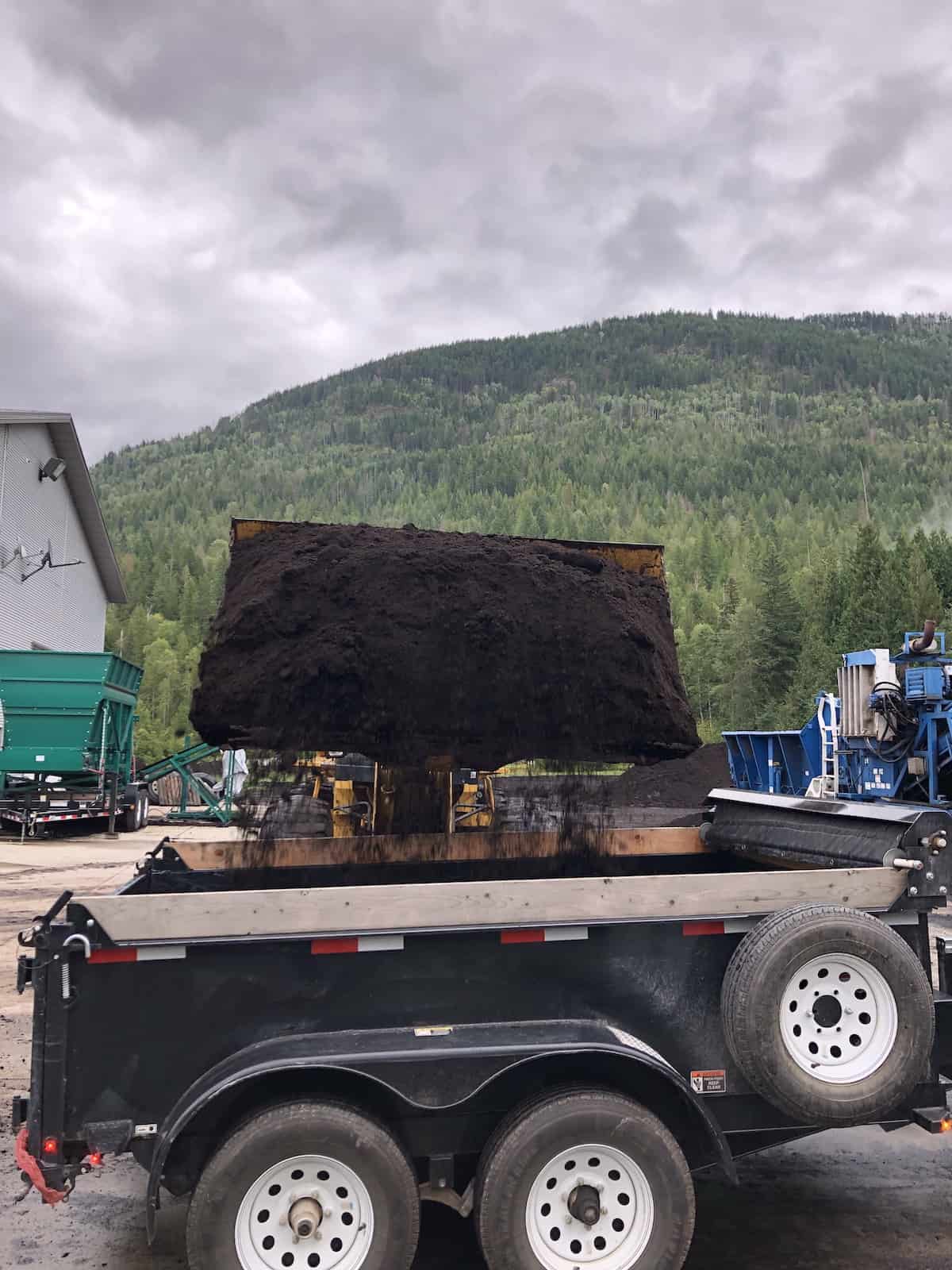
5. Figure out how much mulch you’ll need
Are you asking yourself, “How much mulch do I need?”…
The amount of mulch you need will depend on the size of the area to be mulched as well as how deep the particular mulch you’ve chosen should be applied. You want to make sure you can cover all the important regions as well as extra areas that might be in need of it. However, you shouldn’t worry if you accidentally buy too much mulch because re-mulching is important.
Loose organic mulches like compost are generally initially applied at a depth of 2″ – 4″, depending on who is applying it. Landscapers working on lump-sum projects may tend to skimp on the thickness. Landscapers working on a cost-plus basis (where they charge for every hour worked and all materials, plus a percentage markup), may tend to over-apply mulch.
Inorganic, dense mulches like gravel are applied in thinner layers. Typically these mulches are more expensive per unit weight than organic mulches. Pea gravel, for instance, is sometimes applied at a depth of 1″ – 2″ over top of a prepared structural base. An important pea gravel mulching tip….any deeper than an inch or two and your wheelbarrow might get stuck!
“Weed seedlings need light to grow. If mulch is applied too thinly, weeds may be able to poke through.”
How to Mulch: Save Water, Feed the Soil, and Suppress Weeds, by Stu Campbell and Jennifer Kujawski
A 1- to 2-inch layer of fine mulch like pea gravel should be sufficient, while a coarser material like wood chips should be 3 to 4 inches deep. Too much of either type can suffocate your plants.
Mulch Tip: In areas where you simply want to keep anything from growing, you can lay it on as thick as you like.
6. Research reliable sources of high-quality mulch
The last thing your garden needs is a batch of bad mulch. If you get mulch from an untrustworthy source, it could contain weed seeds and other unwanted items that can wreak havoc for a long time.
Mulching Tip: Look for OMRI-listed organic mulching materials (these are safe for use in organic growing)
It’s best to do your homework before jumping on the cheapest and easiest mulch source. Always obtain a full ingredient list directly from the source before seriously considering a certain mulch. For instance – if the mulch contains compost – ask “what was the material before it was composted?”….it might have been sawdust, it might have been cow poop, or it might have been human sewage sludge. ALWAYS get the ingredients. You can also compare and contrast online reviews of the business you’re interested in.
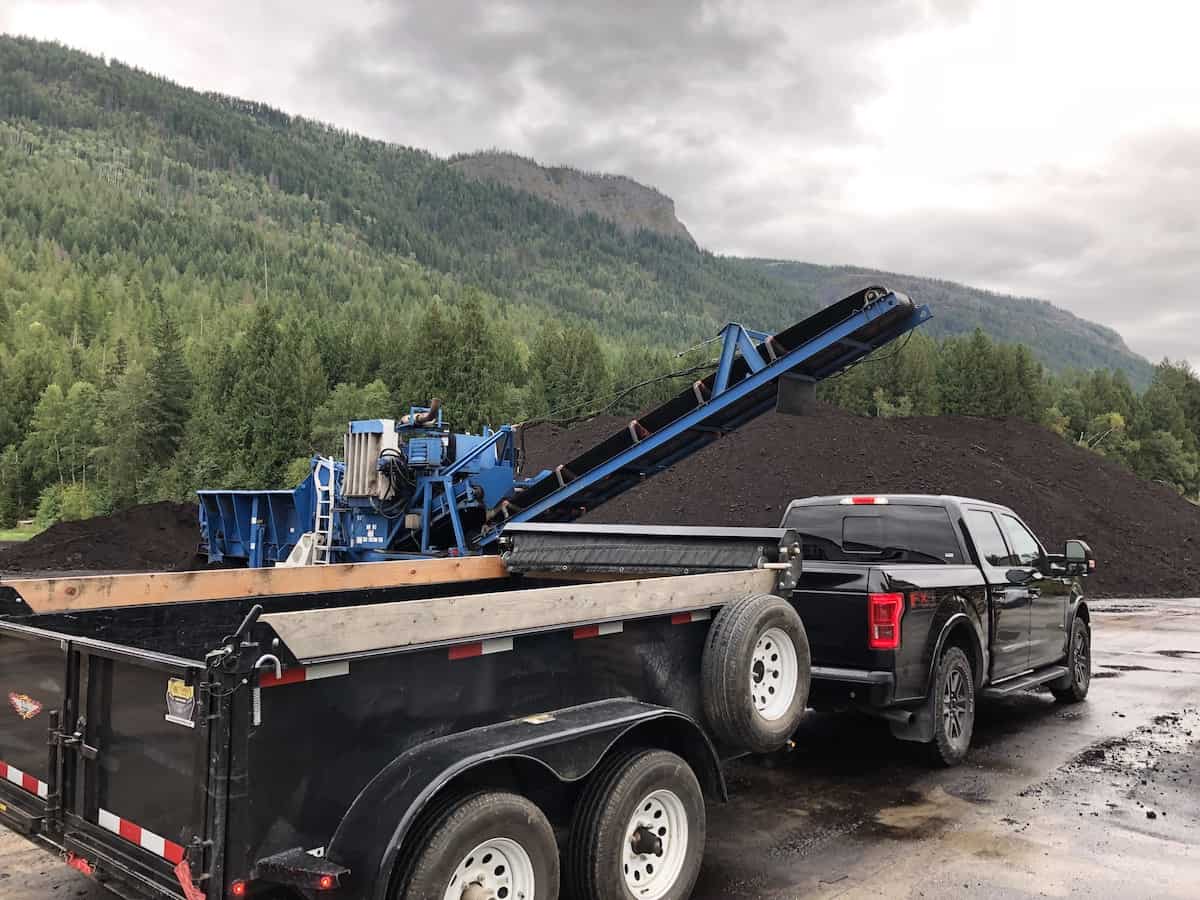
7. Purchase plenty of mulch
So, you know which color and texture you’re looking for, how much you need, and places that sell it. Now it’s time to actually buy the mulch.
At this point, SO many homeowners ask “Is it cheaper to buy mulch in bulk or bags?” There is actually very little rhyme or reason to mulch pricing. One of my hardest-learned mulching tips is that mulch pricing has much more to do with marketing than with ingredients or overall quality.
Typically mulch is much more expensive per pound when it’s packaged in a small bag. Bulk mulch orders delivered in utility trailers or dump trucks are generally much, much cheaper per pound of mulch. BUT – always do the helpful bit of math to figure out and compare the unit prices of different products (and don’t forget to consider delivery costs, which vary widely).
8. Water and feed before placing mulch
One of the mulch’s key benefits is its ability to conserve moisture in the soil matrix by reducing losses from evaporation. Take the time to give the area a deep watering with a sprinkler or other watering device. I like to do this in the evening before applying the mulch.
Mulching Tip: By watering the soil and plants BEFORE laying mulch, you won’t feel like you need to totally drown (and potentially erode) the new mulch to get water to the landscaping plants.
“Mulch’s ability to conserve soil moisture has long been documented (up to 50 percent in some studies). This water-conserving value can’t be overemphasized, especially during times of water restrictions, shortages, and drought conditions.”
How to Mulch: Save Water, Feed the Soil, and Suppress Weeds, by Stu Campbell and Jennifer Kujawski
It’s also common to sprinkle on a granular slow-release organic fertilizer. In the absence of a proper soil test, some gardeners choose to apply a high-quality organic plant food before placing the mulch on top of the soil.
Mulching Tip: It’s also totally okay to put fertilizer on top of the mulch after the mulch is placed. Most granular organic fertilizers are dark brown and will blend in aesthetically, and are also mostly designed to be applied on top as a “top-dressing”.
9. Place mulch on bare soil (but not right up against trees/shrubs)
Now it’s time to get mulching!
Should mulch touch plants? Mulch can touch annual plants (like veggies), and herbaceous perennials (like flowers that come up fresh from the roots every spring), but mulch should never touch woody plants with bark, including trees.
This is one of the least-followed mulching tips! While mulch should cover the majority of bare soil – it should never come into direct contact with tree bark or larger woody shrubs. As discussed, mulch holds moisture. While this is great for soil, it is not the environment for good bark health. Bark is designed to be in the open air, not trapped in moist staleness.
You do of course want the soil around your trees to have some mulch. You’ll get all the soil benefits of mulch and also create a bit of a barrier from garden tools like the lawnmower.
Start by placing mulch in areas with small annual plants or low-growing herbaceous perennials. Save the areas around trees for last so you can be sure you’re not overdoing it.
The key here is to surround the tree with a ring of mulch, but don’t actually let the mulch touch the tree. Leave a 6″ space of bare soil between the tree trunk and the start of the mulch. This will allow the bark to breathe and prevent tree diseases caused by trapped excess moisture.
The mulch around the tree should be a flat surface. There should be a 6″ ring of bare soil between the mulch edge and the tree bark. Don’t over-mulch and create a hill around the base because that can be harmful to the tree. Say NO to volcano-shaped mulch tree rings!
10. Re-mulch regularly (depending on the type of mulch)
No mulch is forever. Eventually, all garden mulch requires “refreshing”.
Inorganic mulches like pea gravel may do fine with a bit of a raking a few times a year to fluff them up, plus perhaps a load of fresh gravel to “top them up” every year or two.
“Like most biological systems, the logic, timing, and efficiency of a natural mulch system is virtually flawless.”
All The Dirt: Reflections on Organic Farming, by Rachel Fisher, Heather Stretch, and Robin Tunnicliffe
Organic mulches are generally applied twice a year – once in early spring and then again in late fall.
Important Mulching Tip: think of nature’s mulch schedule when timing re-mulching efforts. Trees shed their leaves in the fall, creating a dense mat for the next growing season that traps moisture in the ground, insulates the soil against wild temperature swings, and suppresses weeds. Imitate nature, and your results will likely improve!
“In winter, mulch works to prevent soil from rapidly freezing and thawing and so prevents the soil from heaving, which causes root damage to your plants. Although mulch may not prevent the soil from freezing, it can prevent freezing from happening overnight. It’s best to apply winter mulch in late fall, after the ground has frozen. Come spring’s warm weather, removing the mulch allows plants to start sprouting new growth.”
How to Mulch: Save Water, Feed the Soil, and Suppress Weeds, by Stu Campbell and Jennifer Kujawski
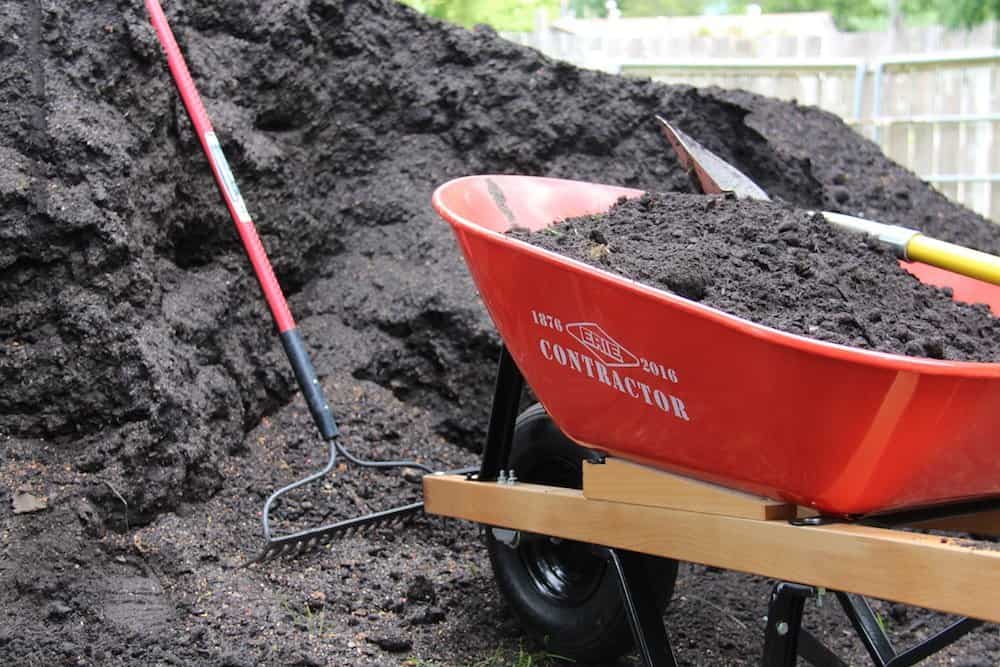


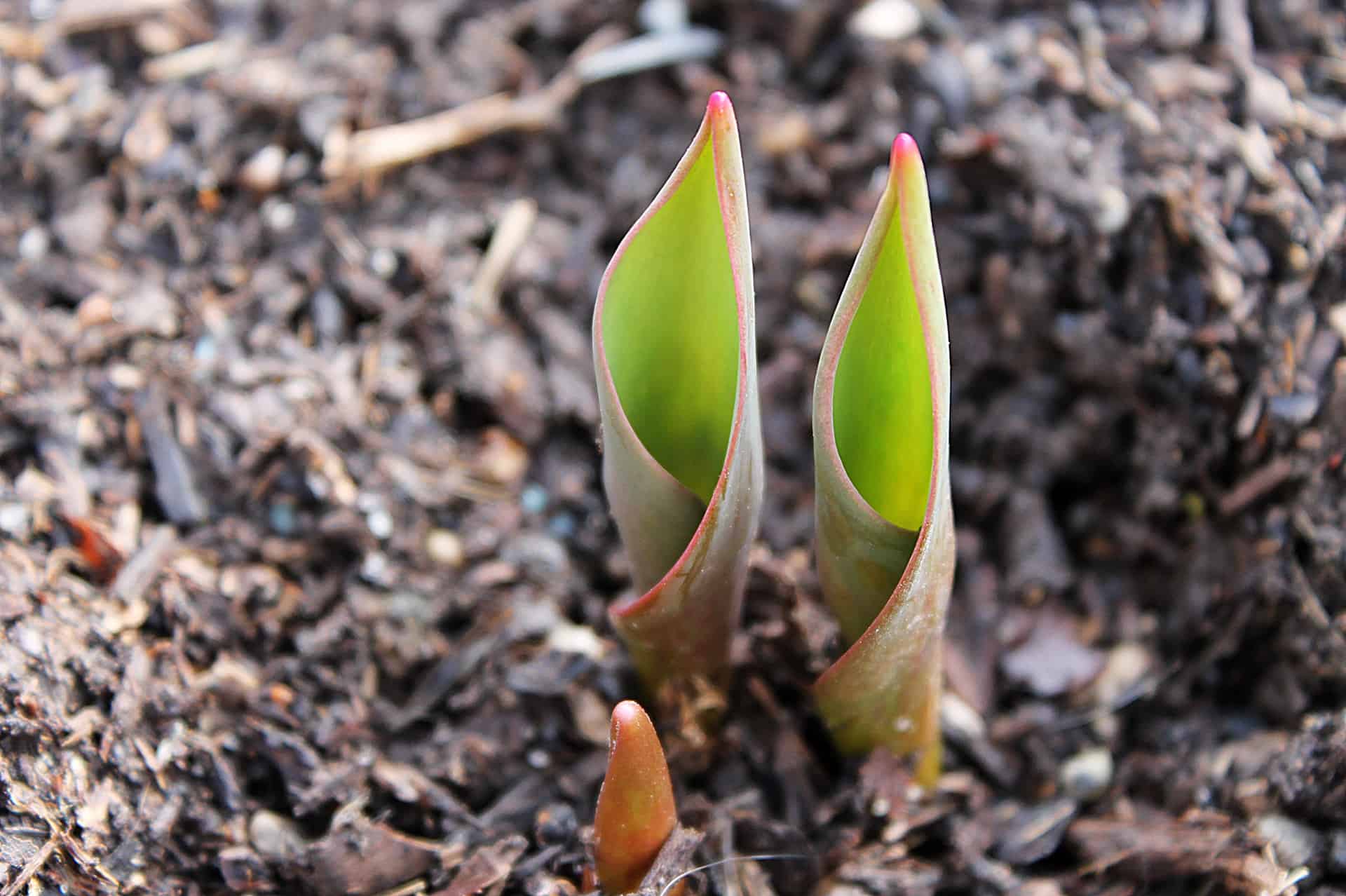
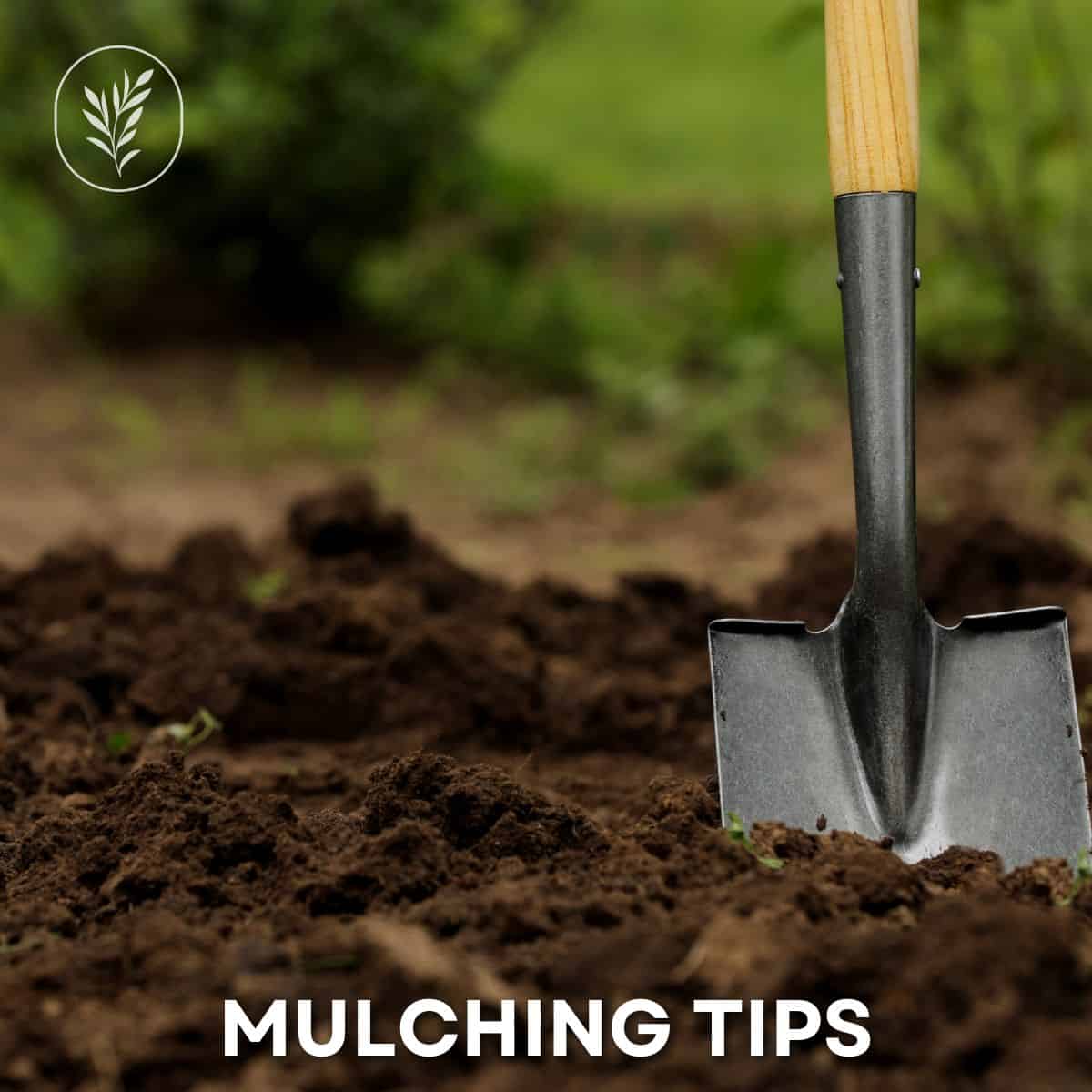
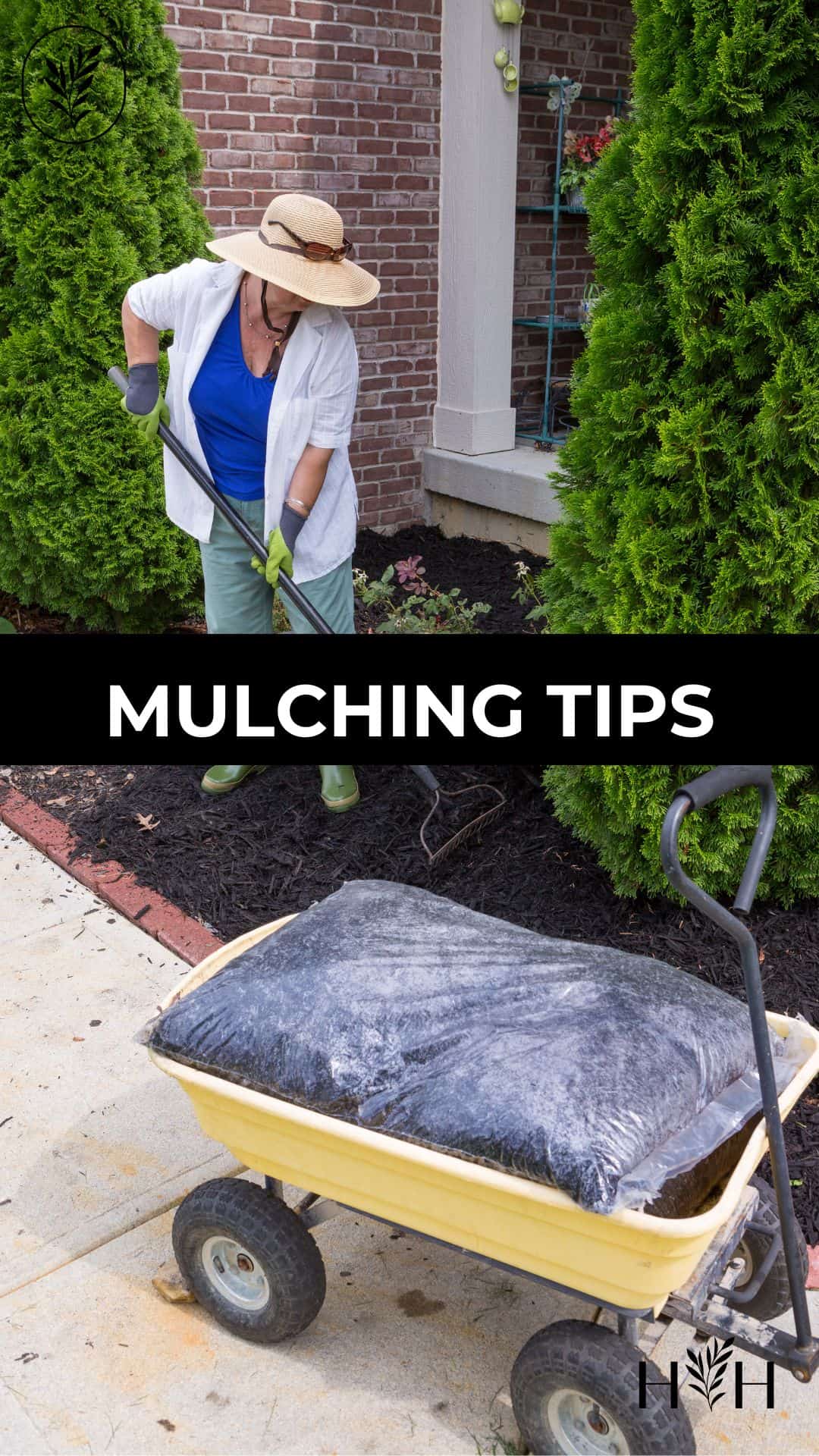
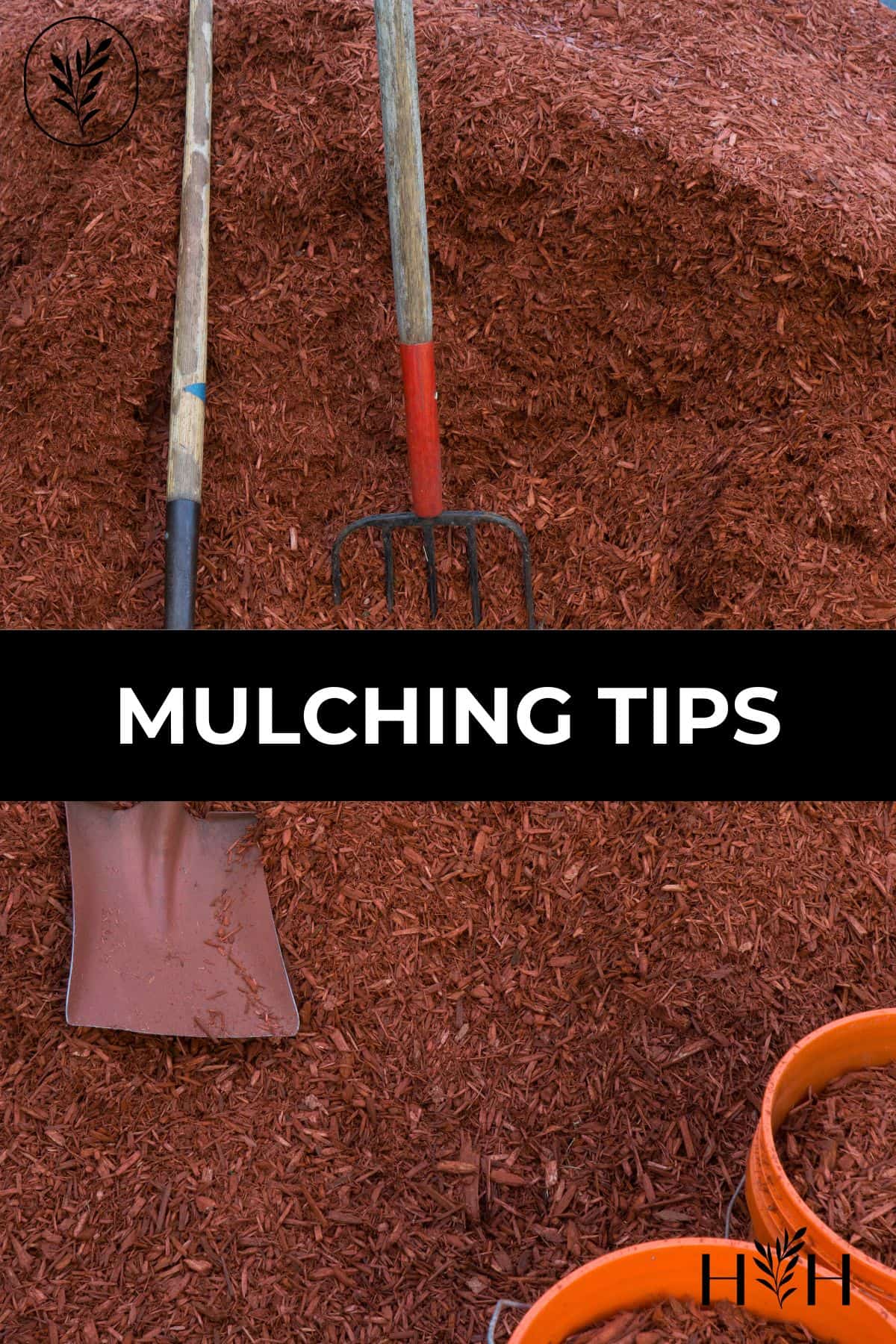
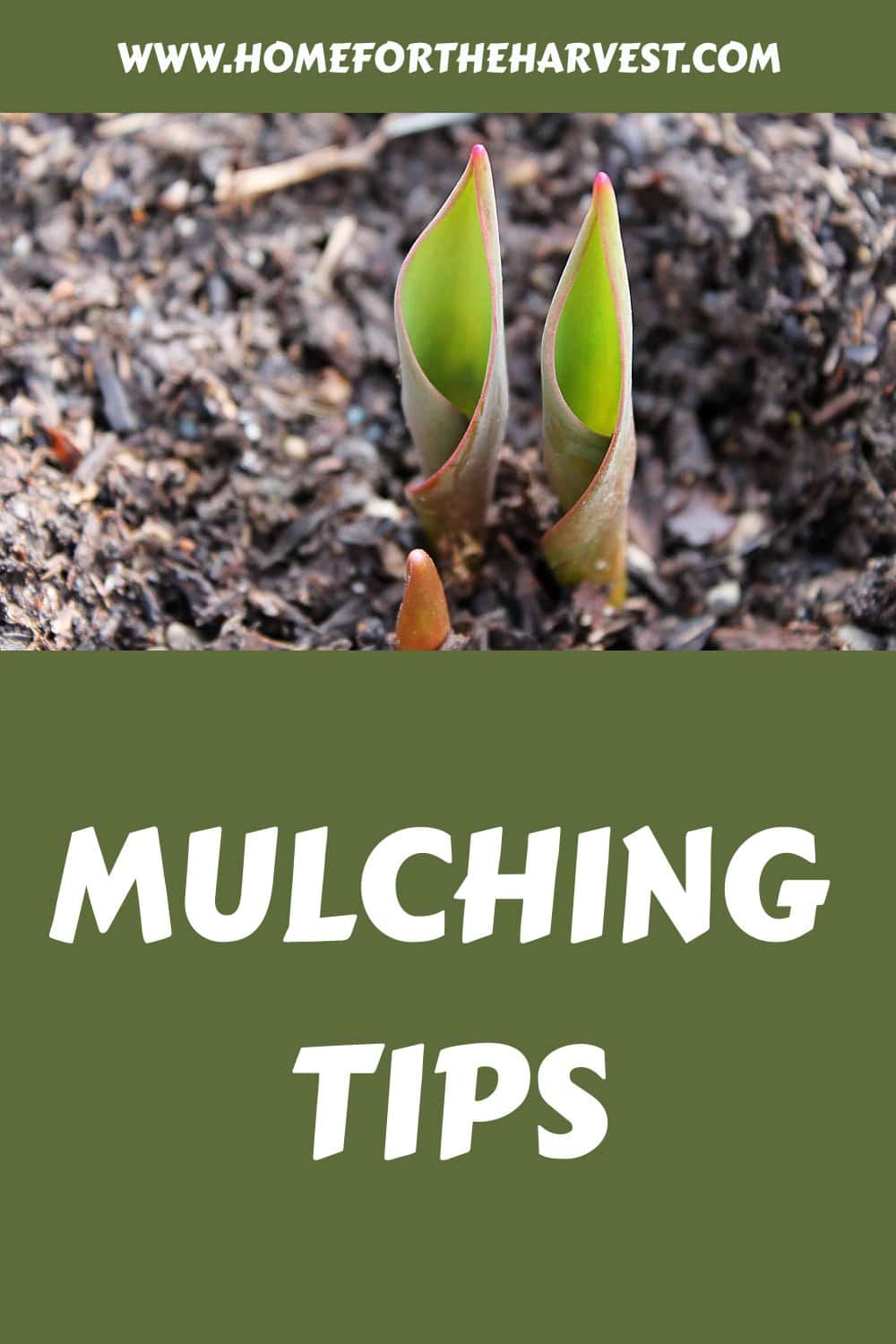




What a great site!
I have a couple of questions: I have a whole lot of leaves and am shredding them to use for mulch. Can I leave the pile of shredded leaves uncovered for use in the Spring?
Thanks in advance for your expertise!
Thanks Teal! Yes, I often leave shredded leaves in a pile over the winter for use during the rest of the upcoming year. If its windy where you are I’d suggest some sort of containment, like a ring of wire fencing, to keep them from blowing away if conditions are dry and windy. But otherwise, yes, fall is the perfect time to make a stockpile of shredded leaves for use during the upcoming seasons.